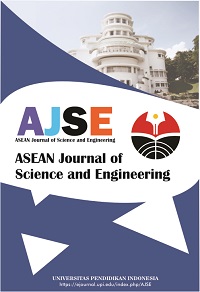Study of Flood Variation of Wainganga River Basin and Dhuti Dam with Impact on Crops at Balaghat Station (India)
Abstract
Keywords
Full Text:
PDFReferences
Harvey, C. A., Rakotobe, Z. L., Rao, N. S., Dave, R., Razafimahatratra, H., Rabarijohn, R. H., Rajaofara H., and MacKinnon, J. L. (2014). Extreme vulnerability of smallholder farmers to agricultural risks and climate change in Madagascar. Philosophical Transactions of the Royal Society B: Biological Sciences, 369(1639), 20130089.
Khajuria, R., Sharma, F. L., and Podikunju, B. (2003). Knowledge assessment of farmers about sprinkler and irrigation technology. Indian journal of social research, 44(4), 277-284.
Nayak T. R., and Narulkar, S. M. (2011). Effects of land use and land cover changes on water yield in goi watershed of Narmada basin. Journal of Indian Water Resources Society, 31 (1-2), 35-44.
Panda, A., Sahu, N., Behera, S., Sayama, T., Sahu, L., Avtar, R., Singh, R. B., and Yamada, M. (2019). Impact of climate variability on crop yield in Kalahandi, Bolangir, and Koraput districts of Odisha, India. Climate, 7(11), 126.
DOI: https://doi.org/10.17509/ajse.v3i3.47222
Refbacks
- There are currently no refbacks.
Copyright (c) 2022 Universitas Pendidikan Indonesia

This work is licensed under a Creative Commons Attribution-ShareAlike 4.0 International License.












